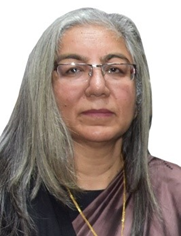BRICS: In Search of Unity?
The fourth BRICS (Brazil, Russia, India, China and South Africa) summit held in New Delhi saw steps towards greater financial integration and the establishment of a development bank. On the political front, the five leaders unanimously agreed, amongst other things, that dialogue is the way out for solving the Syrian crisis and the Iranian nuclear issue. While the summit ended with consensus about future plans of cooperation and on crucial issues of global concern, doubts still remain about the cohesiveness of the grouping.
The idea of BRIC was first articulated in 2001 to represent the shift of economic power from the developed countries to the developing world. Today, BRIC is more than an acronym. It emerged as a formal grouping in 2006, at the first meeting of the foreign ministers of Brazil, Russia, India and China on the sidelines of United Nations General assembly in New York. At the Sanya summit in 2011, South Africa joined the grouping as a fifth member, thus bringing representation from the African continent.
There is no doubt that the BRICS grouping has evolved over the years as an important platform of consultation on various issues of economic and political importance. In the wake of the recent economic crisis, the emerging economic importance of BRICS is undeniable. Latest estimates suggest that BRICS countries excluding South Africa collectively account for around 25 per cent of world GDP; their share is expected to increase to 40 per cent by 2030. According to Goldman Sachs, the combined economies of the BRICS are expected to surpass those of the G 7 by 2035. Moreover, the five BRICS countries together account for a quarter of the world’s land mass and a little less than half of the world’s population. Intra-BRICS trade today stands at $230 billion. Thus, it appears that BRICS is emerging as a “new growth pole in the multi polar world order”.
In its first two summits at Yekaterinburg and Brasilia, the BRICS concentrated upon the economic agenda, with the leaders using the platform to articulate the viewpoint of the emerging economies and developing countries. In the wake of the economic crisis in the US and Europe the group insisted on reshaping the rules governing the existing international economic order and reforming the Bretton Woods institutions. However, at the Sanya summit last year, the crisis in the Arab world forced the leaders to consider political issues and strive towards building common positions.
The theme for the New Delhi summit was “BRICS Partnership for Global Stability, Security and Prosperity.” The leaders deliberated on a wide ranging agenda that included issues such as sustainable development, food and energy security, health, poverty eradication and global governance. They have decided to set up a joint working group to examine the feasibility of a BRICS investment bank to mobilise resources for infrastructure development projects in BRICS and other developing countries. At the same time, two agreements were concluded to enhance intra-BRIC trade and economic ties: the agreement on extending facilities in local currencies under BRICS inter-bank cooperation mechanism, and the multilateral letter of credit confirmation between the intra-BRICS EXIM banks.
While the BRICS grouping does provide an opportunity for each member to play an important role on the global stage, one of the challenges that it faces is cohesiveness. Take the issue of the BRICS development bank. While it is indeed a laudable initiative, the challenge lies in aligning the differing interests of the member countries. Moreover, other members of the grouping are wary of China’s domination over the bank given that China holds very large foreign exchange reserves ($ 3 trillion). While the Delhi Declaration calls for candidatures from the developing world for the position of the President of the World Bank, the BRICS have not been able to agree upon a common candidate. This appears to be a case of history repeating itself. Last year, the BRICS countries failed to unite behind a common candidate for the top job at the International Monetary Fund, thus leaving the path open for French Finance Minister Christine Lagarde to succeed Dominique Strauss-Kahn.
On the political front, in 2011, the presence of all BRICS members together at the United Nations Security Council presented them an opportunity to coordinate their positions on issues of global concern. But they failed to do so on issues like Libya and Syria. In the case of Libya, while South Africa voted in favour of Resolution 1973 approving the “No fly zone” and NATO air strikes, the other BRICS countries abstained. In the case of Syria and the latest resolution backing the Arab League plan for President’s Assad’s removal, India, Brazil and South Africa voted in favour while China and Russia vetoed it. While possibilities of synchronising positions do exist, the fact remains that BRICS is a heterogeneous group composed of democracies and autocracies, energy importers and energy producers. Further, national interests and geopolitical factors limit the possibility of BRICS members reaching a unified and collective viewpoint. Thus, while their growing economic clout has brought Brazil, Russia, India, China and South Africa together, translating the hand holding gestures at the end of each summit into real unity is likely to remain a daunting task.








